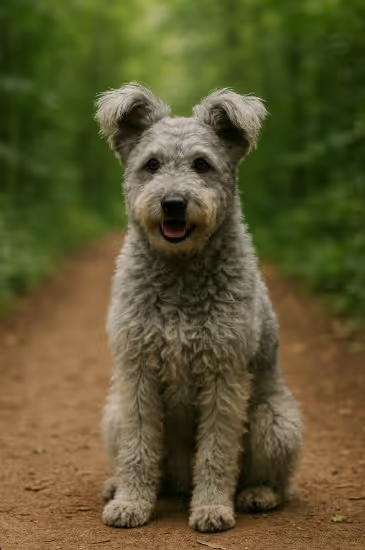The Pumi is a compact, ultra-athletic Hungarian herding dog famed for its corkscrew curls, perky “question-mark” tail, and expressive ears. Lively, vocal, and wicked smart, the Pumi (pronounced POO-mee) shines in agility, herding, obedience, and trick sports. Ideal for active owners, this low-shedding herder loves having a job and close daily interaction. If you’re wondering “Are Pumis good apartment dogs?”—they can be, with serious exercise and bark management.

Developed in Hungary from the 17th–18th centuries, the Pumi likely descends from native Puli stock crossed with western European herding and terrier-type dogs brought by traders. The result was a quick, agile, “all-terrain” drover excelled at gathering sheep and cattle in tight, hilly pastures while serving as a keen farm watchdog. Modern breed standardization began in the early 1900s in Hungary; the Pumi is now recognized internationally (including by CKC/AKC) and is celebrated in dog sports for its speed and focus.
A square, elastic mover with a curly coat and keen expression.
Low shedding but not low maintenance—routine keeps curls healthy.
A true energizer—needs daily outlets for body and brain.
Brilliant, biddable, and sensitive—with a dash of comedic mischief.
Fuel the athlete—keep lean for joint health and speed.
Generally robust, but screen like a performance dog.
Source from preservation breeders or sport-savvy rescues.
Are Pumis good apartment dogs?
Yes—if you meet their 60–90 min/day exercise and teach “quiet” and settle routines.
Do Pumis shed or are they hypoallergenic?
They’re low-shedding, but no dog is truly hypoallergenic; meet one first if you have allergies.
How much grooming does a Pumi need?
Light weekly maintenance plus a bath and tidy every 1–2 months; reset curls after bathing.
Are Pumis easy to train?
Very—use upbeat, varied sessions; they excel in agility, tricks, and rally.
Do Pumis bark a lot?
They’re communicative herders. Teach a cue for “quiet” and provide adequate exercise.
Are Pumis good with kids and other pets?
Yes, with early socialization; supervise around running children to curb heel-nipping instinct.
What’s the ideal exercise for a Pumi?
Daily cardio + brain work: agility sequences, fetch/recall games, scent puzzles, structured herding.